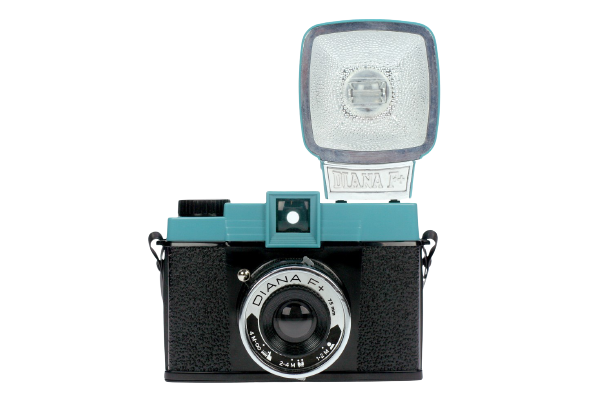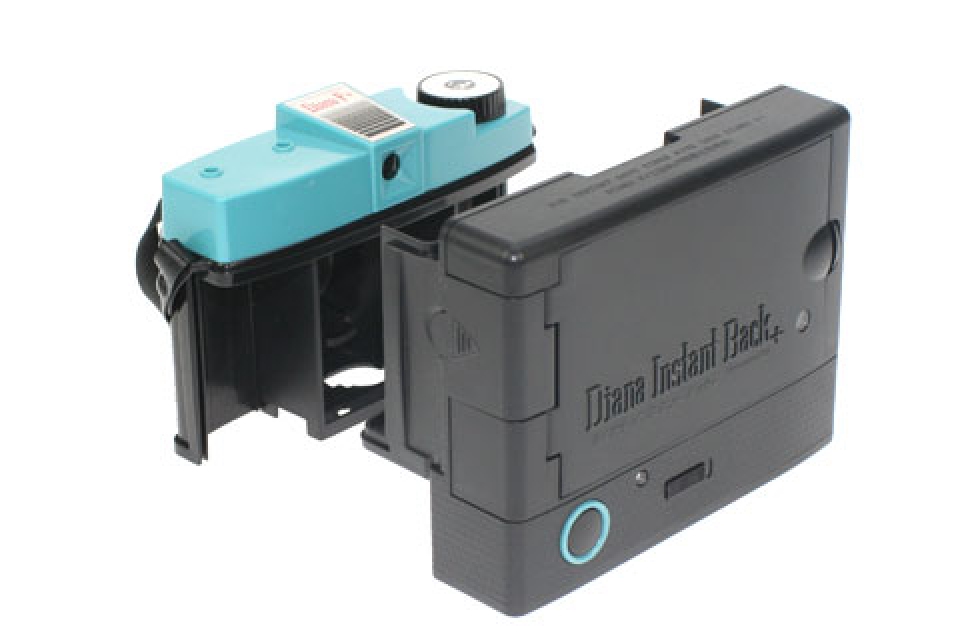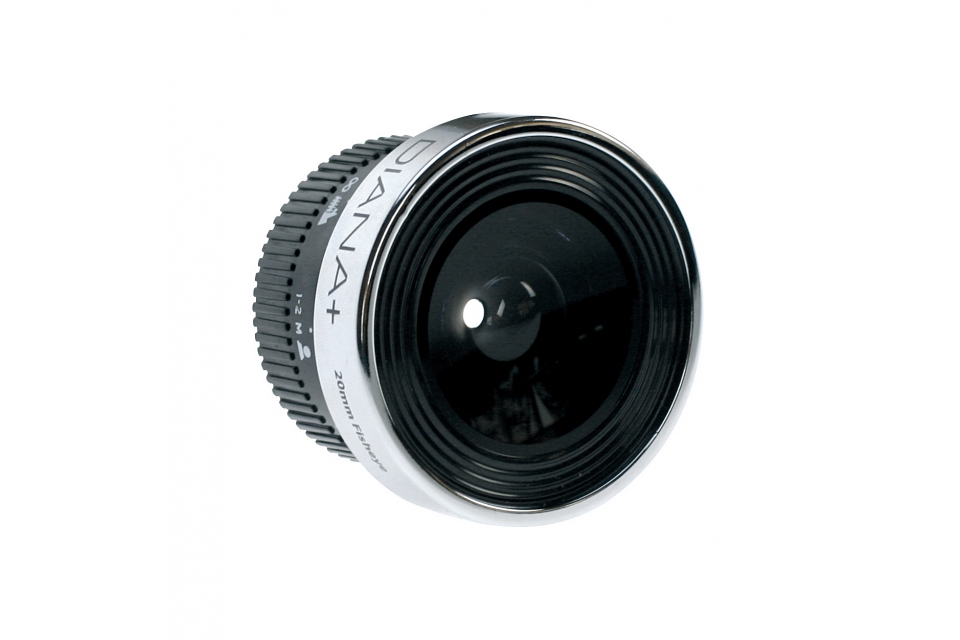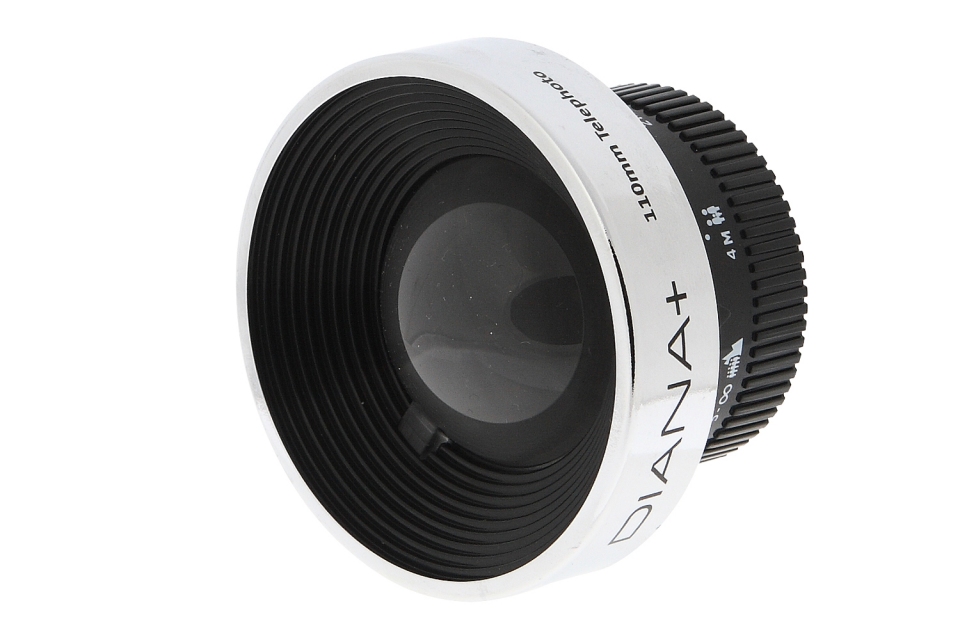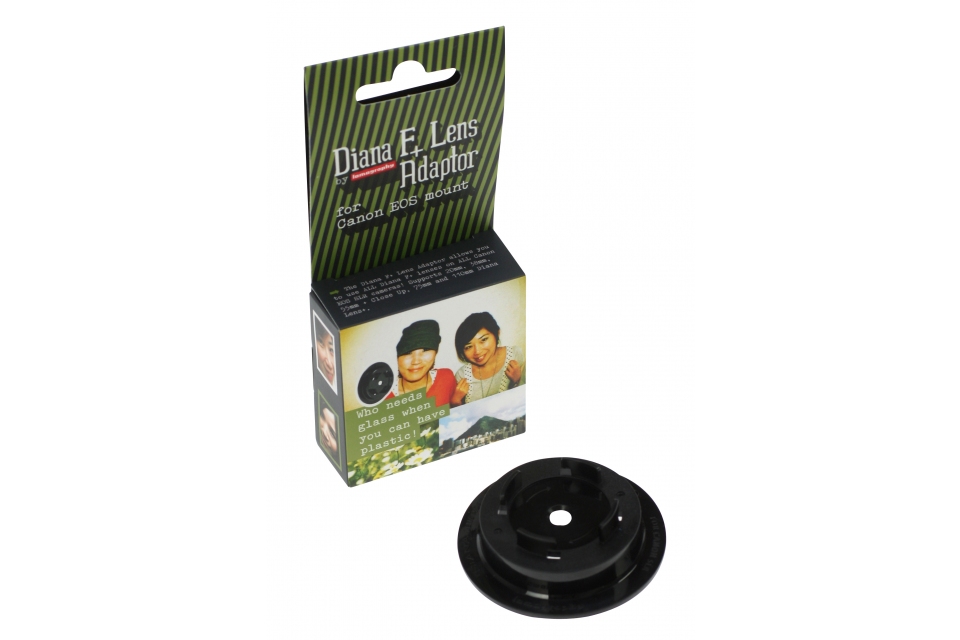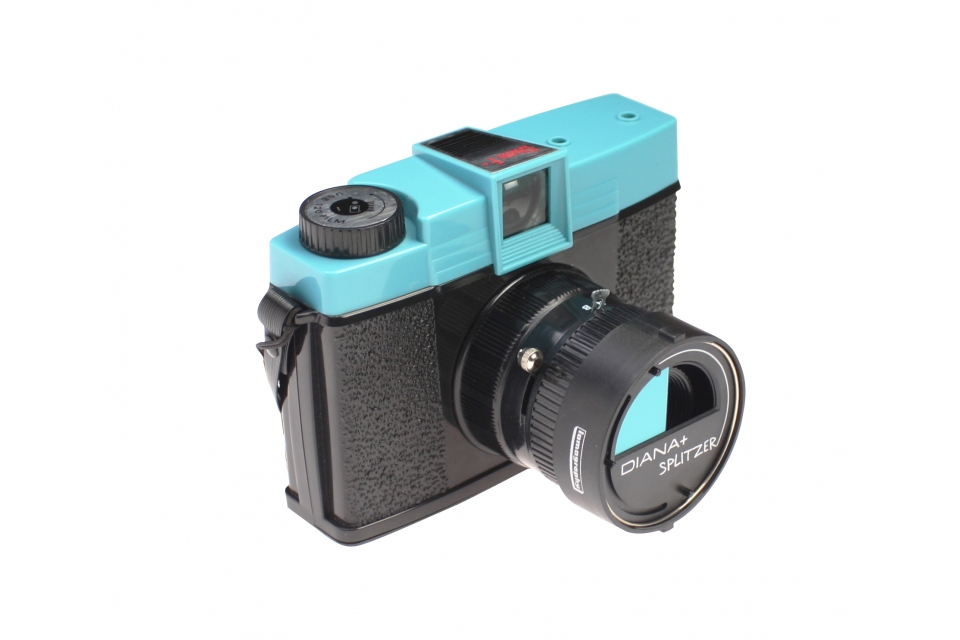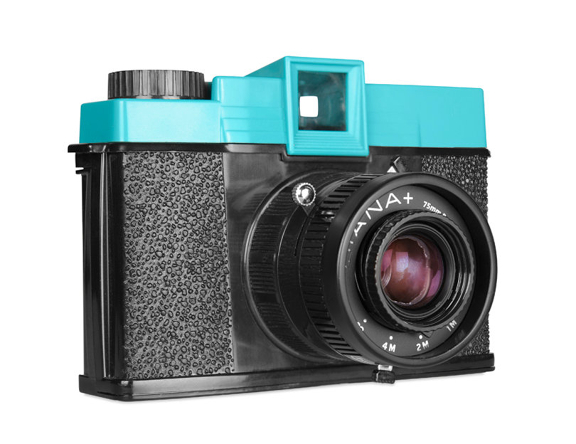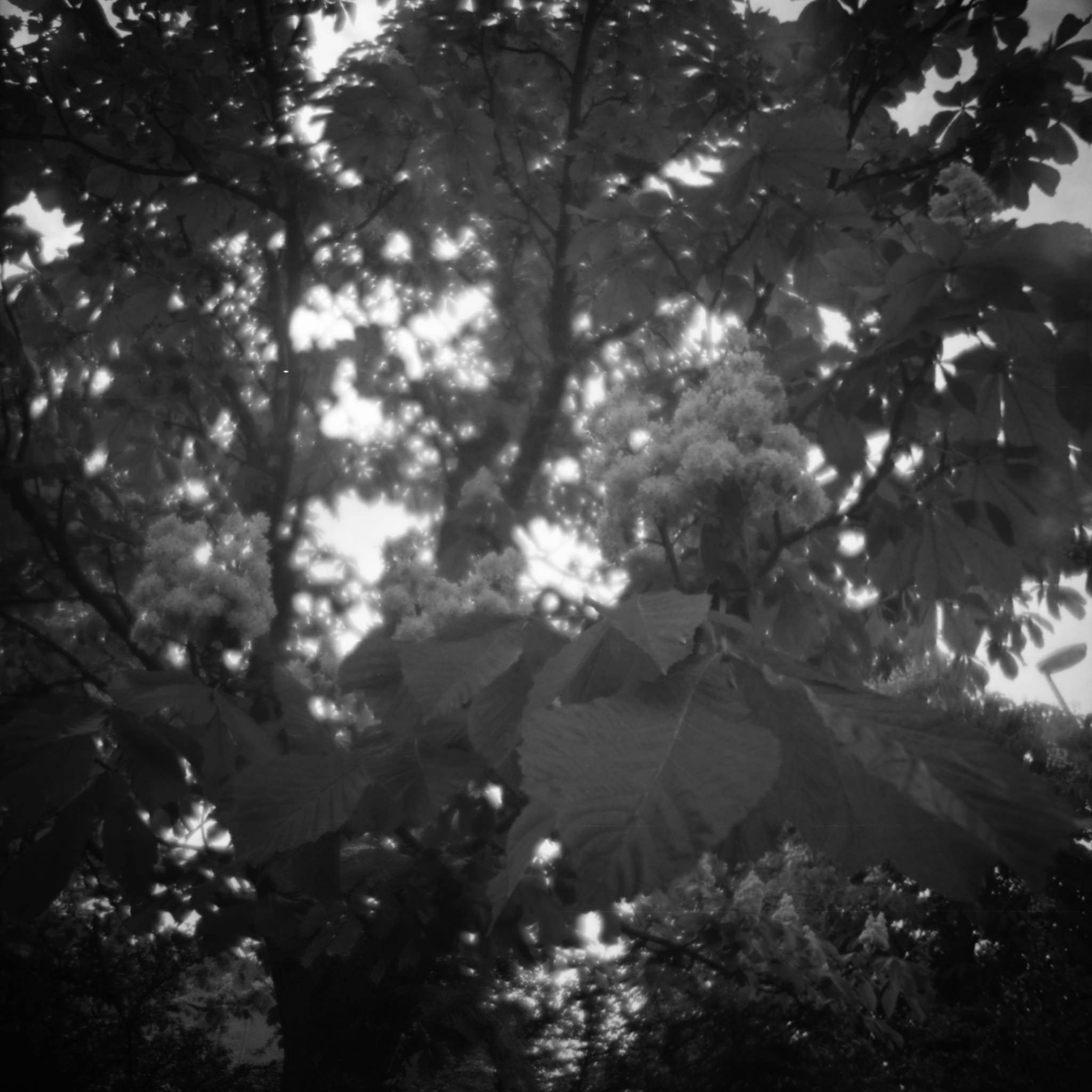The Diana F+ is a medium format camera from Lomography.
The roll film camera is made of plastic, therefore very light. Lomography often releases special editions of the plastic camera for various occasions. There are now more than 20 special editions of the camera (eBay / Amazon).
The history of the Diana
The Diana was presented by Lomography in 2007. It is the new edition, of the Diana camera.
The Diana is a plastic camera from the 1960s. It was manufactured in Hong Kong by the Great Wall Plastic Factory. It was sold for a few dollars or was distributed as a promotional gift.
Equipped with a simple plastic lens, the Diana was never intended for serious photography, so it could be called the first toy camera. After the triumph of 35mm film, production of the Diana ended in the mid-1970s.
Due to the demand for Lomo cameras, Lomography reissued it with many new features. Besides the standard black and green version, there are a lot of Special Editions of the Diana F+.
The functions of the Diana F+
Not only is the body made of plastic, but the lenses of the Diana F+ are plastic as well. The standard lens has a focal length of 75mm and can be replaced, unlike the old Diana.
It is equipped with two exposure times, Normal (about 1/100s) for everyday use and a Bulb mode for long exposures. In Bulb mode, light falls on the film for as long as the shutter button is pressed. For this, the Diana has a handy accessory located on the camera. A small plastic part is pushed in when the shutter release button is pressed down and prevents it from going back up and closing the shutter again. Depending on the desired exposure time, it can be removed with a pull and the shutter closes. This makes long exposures easy.
On the bottom of the lens, the aperture is set using a slider. There are four apertures to choose from, f/11 (cloudy), f/16 (partly cloudy), f/22 (sunny) and a pinhole (f/150). Pinhole photography is possible when the pinhole is selected, and the lens can be removed for this purpose or photographed with it, depending on your preference. The small weather icons should help with the choice of aperture.
Without an additionally available back or without modification, the Diana can only be used with medium format film. Medium format film, or roll film, is larger than 35mm film and has no canister into which it is rewound. The film is protected by a protective paper attached to the back of the film. It is wound from one spool to another in the camera, so rewinding is not possible.
A small window on the back of the camera allows you to check the current frame count and, when rewinding, how far you have to turn the wheel on the top of the camera to get to the next frame. With the help of the additionally available backs, it is also possible to use 35mm film and instant film in it. With a little skill, 35mm film can be loaded and exposed without a 35mm back.
In principle, any medium format or roll film can be used with the Diana F+. It doesn’t matter if it’s black and white, slide, cropped or not, color or redscale. You should only pay attention to the sensitivity of the film. The Diana F+ is a low light camera, which means it needs a lot of light for good pictures.
So to get good results, you can either shoot only on sunny days, use a more sensitive film, or use a flash. On sunny days, a film with a sensitivity of ISO 100 is usually enough, such as the Lomography Color Negative 100 120 (eBay / Amazon), Kodak T-Max 100 (eBay / Amazon) or Fujifilm Provia 100F.
On cloudier days, it doesn’t hurt to use film with a sensitivity of min. ISO 400. For example, the Kodak TRI-X 400 (eBay / Amazon), a very good film, the Kodak Portra 400 (eBay / Amazon), or the Fujifilm Provia 400X are good choices if you need a slide film in bad weather. A flash in bad weather and indoor shooting can’t hurt either.
Normally it exposes 12 large images on the film. Through a mask, 16 images are also possible, but then only with a size of 4.2 x 4.2 cm per image. Panoramic shots are also possible with a mask. The plastic camera from Lomography also has a tripod thread.
The viewfinder of the Diana F+ is simply a hole to look through. It is not connected to the lens, so it can only give a small preview of the later image.
The Diana F+ is only conditionally suitable for beginners, especially the high film and development costs, spoil the fun of experimenting and analog photography.
Scope of delivery of the Diana F+
The Diana F+ comes, for the version with flash, with the Diana F+ Flash, color filters, manual, 4.2 x 4.2 cm mask, 4.65 x 4.65 cm panoramic mask and 2 adapters for the flash.
Also included is a book with photos and the history of the Diana. With the adapters for the flash, it can be used with a normal camera with Hot Shoe. Flashes with hot shoe can be used with the other adapter on the Diana F+.
Accessories for the Diana F+
Instant Back+
This accessory turns plastic camera into an instant camera. The Instant Back+ mounts to the back of the Diana.
The film used is Fujifilm’s Instax Mini Film (eBay / Amazon). This film is still in production and is relatively easy to get. One film pack contains ten pictures.
Photographs are taken normally, just as when using the normal back. To get the instant picture, a button on the back must be pressed, then it ejects the picture. After a few minutes, you then hold the finished picture in your hand.
Of course, the Instant Back can be used with the Diana accessories, such as the lenses, flash and splitter, and double and multiple exposures are also possible without any problems.
In addition to the back, the scope of delivery also includes a compensating lens (for correct focusing). This accessory is also equipped with a tripod thread and a film counter.
The Instant Back+ was introduced by Lomography in March 2009. It was developed by Lomography Japan.
35mm Back
The Diana+ 35mm Back allows 35mm film to be used in the Diana F+.
There are four formats to choose from: square with exposed sprockets, panorama with sprockets, normal panorama without sprockets, and standard landscape.
Two film counters indicate the number of frames. In addition to the back, the package also includes instructions and four plastic frames for the different formats.
Why use 35mm film in a medium format camera? Besides more images per film and the exposure of the sprockets, probably the main reason is the cheaper prices and the greater availability of 35mm film. That’s why Lomography offers this back for the plastic camera.
Because of the smaller medium, 35mm film is smaller than roll film, the size of the image is also reduced. So it can happen that for example heads are cut off, because the viewfinder is not designed for this format. Effects such as vignetting or the fisheye effect of the Diana lenses are also not as effective when the back is used.
So if you only want to use the Diana for 35mm film and never want to use medium format film, it wouldn’t hurt to take a look at the Diana Mini or Holga 135, as they are probably the better choice.
Cable Release Collar
For the use of a cable release this accessory is necessary, since the Diana has no thread for one. There is also a solution for this, and that is the Cable Release Collar. This is a plastic attachment that attaches to the front of the camera. Now a normal cable release can be attached to the camera.
There is one already included, but other releases can be used as well. This makes blur-free long exposures and self-portraits easy. A poster is also included in the package.
Diana F+ Flash
Like the Diana, the flash is modeled after the old Diana from the 60s and fits perfectly with the plastic camera. In the scope of supply there are also a lot of color filters, with these the color of the flash can be changed, in which they are put in front of the flash.
The flash is powered by a normal AA battery (eBay / Amazon). On the back of the flash there is a white light. This indicates when the flash is ready for use. When the light is fully lit, flashing is possible. On the side of the flash there is a small button installed, with which the flash can be fired manually.
Normally, it can only be used with the Diana F+ and the Diana Mini. However, with an adapter, it can be converted into a flash for cameras with a hot shoe. The guide number of the flash has not been published by Lomography. The only guide for proper exposure is the chart on the back of the camera.
20mm Fisheye Lens
This additionally available lens transforms the Diana into a fisheye camera. With its 180 degree angle of view, it captures a circular image on medium format film.
It comes with an attachable viewfinder adapted to the focal length of the Diana+ 20 mm Fisheye Lens. Also included is a storage pouch and two lens caps to protect the lenses.
38mm Super-Wide Lens
The Diana+ 38mm Super-Wide Lens for the Diana features a 120 degree angle of view. On a 35mm camera, the focal length is roughly equivalent to a 25mm lens.
The distance is not adjusted in the front of the lens, as with the normal lens, but by turning the lens. It can be used to take wide-angle shots with a blur and darkening in the corners.
Included is a matching viewfinder to attach, a pouch for storage, and matching lens caps.
55mm Wide-Angle & Close-Up Lenses
The Diana+ 55mm Wide-Angle & Close-Up Lenses consists of two lenses. The focal length of the wide-angle lens is equivalent to about 34mm on a 35mm camera. The close-up lens can be attached in front of it, making close-up shots possible at a distance of 15 centimeters.
The two lenses are made of plastic, of course. A matching attachable viewfinder is included.
110mm Telephoto Lens
The Diana+ 110mm Telephoto Lens is a telephoto lens for the Diana F+. It comes with an attachable viewfinder that covers part of the normal viewfinder to fit the lens.
On a medium format camera it has a focal length of 110mm, and on a 35mm camera it becomes a 200mm lens. It produces vignetting, blurring to the corners, and softens the image.
Lens Adaptor – Canon Mount
With this adapter, the Diana lenses can also be used on a Canon DSLR. As with the adapter for Nikon cameras, the crop changes depending on the size of the sensor.
For example, if you want to get the fisheye effect, you should use the lens on the normal Diana F+ and not on the digital camera, since it is practically non-existent there. Since it is only a simple adapter, there is of course no autofocus.
Lens Adaptor – Nikon Mount
With this adapter it is possible to use the Diana lenses on a Nikon F SLR cameras, including DSLRs. All plastic lenses can be used with the Diana F+ Lens Adaptor. The disadvantage is that the smaller sensor means that the cropping of the image is used, keyword cropfactor.
Thus, the focal length with a full-frame sensor or only with a 35mm SLR corresponds as follows:
Diana F+ 38mm Super Wide Lens = 72mm
Diana F+ 20mm Fisheye Lens = 38mm
Diana F+ 55mm Close-up & Wide-angle Lens = 105mm
Diana F+ 110mm Telephoto Lens = 200mm
That means to achieve a normal focal length you should use the Fisheye Lens.
With an APS-C sensor, which is installed in most DSLRs, this occurs even more.
The focal length of the Fisheye Lens is about 60 mm, the Super Wide Lens is a 115 mm telephoto lens, the Close-up & Wide-angle Lens is 170 mm and the Telephoto Lens is an incredible 320 mm telephoto.
It should be noted that the different formats do not change the focal length, but only the section.
When buying one should note that there is no autofocus and there can be problems with the automatic modes, if necessary you have to use the DSLR in manual mode. Therefore, a look at the manual of the camera can not hurt.
Splitter
The Diana Splitzer is attached in front of the lens of the Diana, only goes with the standard lens. It can be used to expose half, a quarter, eighth, or only a sixteenth of the image.
For the second exposure, it can then be rotated so that the part from the first exposure is not exposed again, but only the previously covered part. With the splitter, for example, it is possible to photograph only a head during the first exposure and another body during the second exposure.
75mm Premium Glass Lens
The Diana+ 75mm Premium Glass Lens is a glass lens for the plastic camera. It has a focal length of 75 mm.
The lens consists of three coated glass elements. You have to adjust the focus of the lenses yourself, as with the other lenses. The closest focusing distance is one meter. It can be used on all Diana F+ cameras.
Sample photos
Both pictures were taken with the Lomography Lady Grey B&W 400 120. The film was developed in Kodak XTOL and digitized with the Canoscan 9000F (eBay / Amazon).
Technical datasheet
Technical specifications of the cameraAttributeSpecificationType of Camera Viewfinder camera
Type of Film 120, 35mm (additional accessories), Fuji Instax Mini (additional accessories)
Film transport Manual
Focal length 75 mm
Maximum aperture f/11
Minimum focus distance 100 cm
Focus Manual
Type of focus Zone focus
Focus zones 1 m to 2 m, 2 m to 4 m, 4 m to Infinite
Shutter speeds 1/100 s, Bulb
Bulb mode Yes
Built-in flash No
Flash Connection Connection for Diana F+ Flash, Hot Shoe (with adapter)
Flash sync speed 1/100 s
Tripod mount Yes
Self-timer No
Power supply Not necessary
Country of production China
Video

Carlos Alves de Sousa
United Photo Press
United Photo Press
